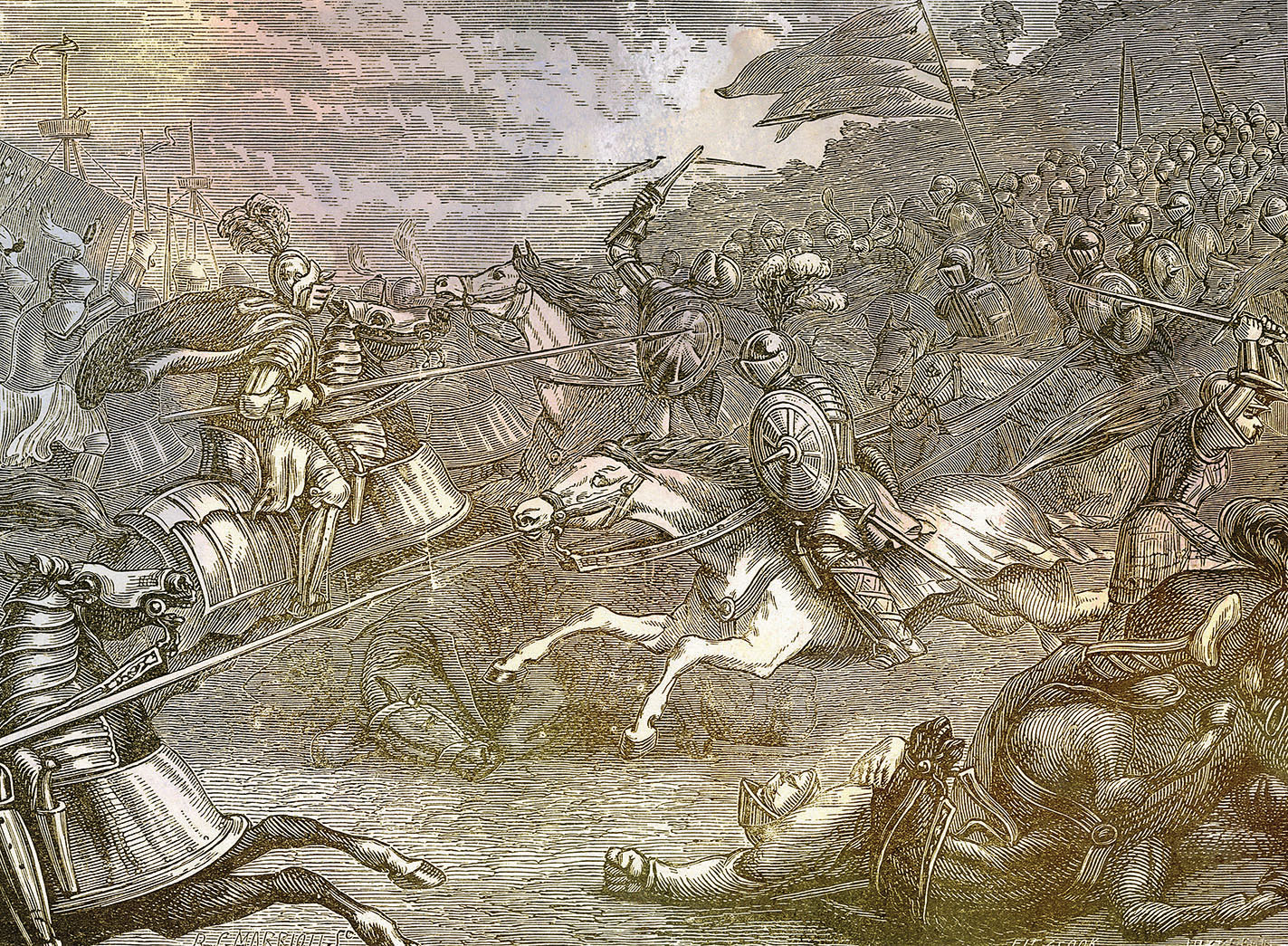The term “Rough Wooing,” attributed to Scottish nobleman George Gordon, describes a brutal 16th century religious and dynastic war between England and Scotland. For much of the 1540s English forces pillaged or occupied areas of Scotland, ravaging Edinburgh and other towns. Despite its victories, the Crown wasted money and lives. King Henry VIII’s primary goal—to ensure the marriage of the child Mary, Queen of Scots, to Henry’s young heir, Edward—ultimately failed.
Born in April 1512, James V, Catholic king of the Scots, inherited his crown in infancy after his father was killed in 1513. In 1528 the teen assumed full power. Six years later the Protestant Reformation prompted his uncle Henry to separate the Church of England from Rome and seize Catholic properties. Their ensuing religious rift led to war in 1542. A Scottish victory in August at Haddon Rig was overturned in November at Solway Moss by a smaller English force that routed James’ poorly led army and captured some 1,200 men. An ailing James died three weeks later, leaving his 6-day-old daughter, Mary, as successor.
Determined to impose union between Scotland and England, Henry insisted on a marriage between Mary and Edward in a July 1543 treaty. Scottish loyalties split between English-backed Protestants and Catholics. Scottish regent James Hamilton signed the treaty but then switched to the Catholic position. The Scottish Parliament renounced Henry VIII’s treaty in December 1543, prompting a fierce response. An invading English army commanded by Edward Seymour attacked Edinburgh in May 1544, burning the city on the king’s orders.
In February 1545 at Ancrum Moor the Scots routed an English force that had been raiding the borders. An uneasy truce followed. Then Henry died, in January 1547, leaving 9-year-old Edward VI as king. The boy’s uncle Seymour, Duke of Somerset, served as regent.
After also failing to force a marriage alliance, Somerset resumed hostilities in September, arriving outside Edinburgh with some 18,000 troops plus a fleet armed with modern artillery. The 22,000 Scots who met them September 10 at Pinkie Cleugh used outdated pike tactics. Innovative English use of “combined operations”—integrating infantry, cavalry, and land-based and naval artillery —decimated about 6,000 Scots in what the Scots recall as “Black Saturday.”
The Scots continued to resist, hiding 4-year-old Queen Mary on Inchmahome Island. Though Somerset garrisoned troops across eastern Scotland, he could not complete his victory. Increased costs and domestic turmoil weakened English resolve. In August 1548 Scots spirited their young queen to France, and the English abandoned their Haddington base in 1549. Negotiations in March 1550 ended hostilities, and the nations signed a formal peace a year later.
Lessons:
Talk first—fight if you must. Henry VIII should have tried the carrot (guile and diplomacy) approach to the Scots before turning to the stick; the latter resulted in huge losses of lives and treasure but not in the hoped-for dynastic union between Mary and Edward.
Better tech usually wins. Though the Scots outnumbered the English at Pinkie Cleugh, they quickly learned that well-equipped, versatile armies can consistently defeat larger, less innovative forces.
War is a national effort. Whether England in Scotland in 1548 or the United States in Vietnam in 1968, unity on the home front is vital to successful military expeditions abroad.
This article appeared in the July 2021 issue of Military History magazine. For more stories, subscribe here and visit us on Facebook:






